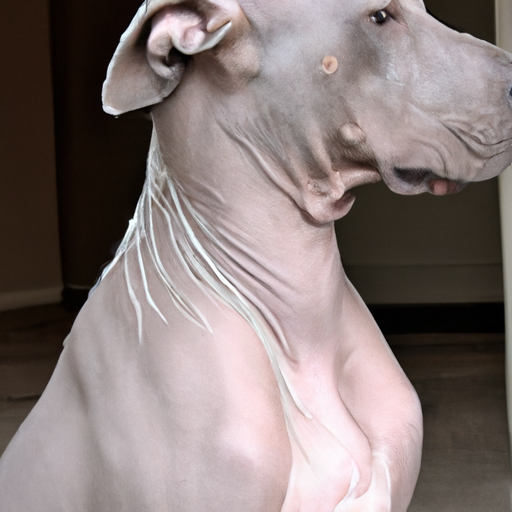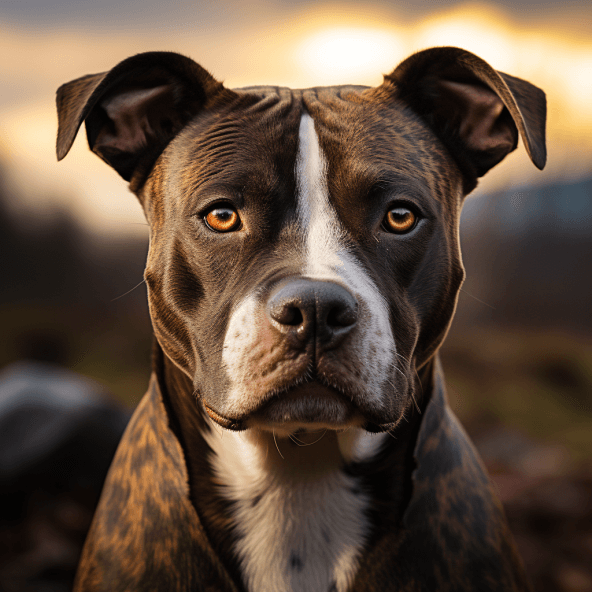How To Get Rid Of Fleas On Dogs?
Dealing with fleas on your beloved pet dog can be quite a nuisance, right? Picture this, you’re enjoying a Sunday stroll in the park with your furry friend and later that afternoon, you notice him scratching incessantly. Your heart sinks, knowing you may be fighting off those pesky fleas again. The road to flea-free fur is not always simple, but fret not, as it is indeed achievable.
First and foremost, it’s crucial to empathize with your pet’s discomfort and take swift action. It’s not about merely exterminating these bloodthirsty parasites, but also about soothing your dog’s irritated skin. This may require a few specially formulated shampoos, perhaps a high-quality flea comb, and some old-fashioned elbow grease. Treatments vary in their approach and effectiveness, so it’s essential to find one that fits your pup’s unique needs and tolerance. Stay patient, remain resilient, and invest time and care – you’ll soon rediscover a happy, itch-free dog.

Understanding Fleas and Their Effects on Dogs
Oh, the pernicious plight of pests—fleas! Small as they may be, these little critters can wreak havoc on your beloved dog’s life.
What Are Fleas?
Fleas—what are they? Well beyond just annoying, these minuscule bloodsuckers are pests of the highest order. Of course, to you, they are nothing more than a tiny speck. To your dogs, however, they are tormentors, itchy, irritating invaders compromising their comfort and even health.
Lifecycle of a Flea
The story of a flea is one that revolves around survival and propagation. Beginning as an egg dropped by an adult flea onto your dog’s coat, these potential usurpers swiftly transition through varying stages—egg, larva, pupa and to a full-grown adult, all set for a blood meal.
How Dogs Get Infested with Fleas
Consider this—how do our dogs, our companions so dear, come to be infested with these rancid riders? Disturbingly, it is far easier than one might assume. A playdate with a flea-infested friend, a frolic through a grassy patch, or even a simple pat by a well-meaning but ill-informed stranger can all contribute.
Signs of Flea Infestation in Dogs
The questions over a possible flea infestation usually begin with excessive scratching. This is followed by visible irritations on the skin, and a keen eye might even spot the tiny, brown intruders jumping off and on their canine host.
Potential Health Risks Associated with Fleas
Fair warning, friend—fleas are more than just irritating. Your beloved dog can suffer from a range of health risks because of them.
Preventive Measures Against Fleas
Forewarned is forearmed, as they say. Understanding the threat from fleas is the first step, but action needs to follow. Here’s what you can do to protect your fur-baby.
Maintaining Clean Surroundings
Cleanliness wards off unwanted guests—flea, being no exception. Regularly dusting corners and washing dog beds and toys won’t just keep them away, but also stop an infestation from getting out of hand.
Regular Grooming of Dogs
While our dogs may inherently enjoy the occasional mud bath, yours, in truth, would benefit more from regular grooming. Brushing is not just a bonding exercise—it’s a chance to check, maybe even dislodge something untoward.
Use of Flea Collars
Here’s a surprisingly simple tool waiting to be in your arsenal—a flea collar. A steady shield of anti-flea medication, these emit gas that repels pests, or release medication that seeps into a dog’s skin, targeting the problem at the source.
Appropriate Lightweight Clothing
Finding a balance in the clothing your dog wears—keeping them clean, protected, and yet free to move—is critical in keeping fleas at bay.
Over-the-counter Flea Treatments
While prevention is key, an infestation may still occur. Fret not—for there are ample solutions available over-the-counter at your local pet store or pharmacy.
Topical Flea Treatments
Administered via a drop or two onto your friend’s skin, topical treatment is a tried and true method. But remember, precisely following instructions is key.
Oral Flea Medications
These are treatments administered orally—pills that work from within, helping kill fleas upon their triumphantly short-lived blood feast.
Flea Shampoos
With powerful ingredients to kill off fleas, these specialized shampoos are a godsend on occasion. A bath with one of these, and your dog might just be flea-free—certainly a momentous occasion to wag about.
Flea Combs
Good old-fashioned combing—for people in the past dealt with fleas too. A fine-toothed flea comb might just do the trick, helping physically remove fleas and their eggs.
Considerations When Choosing Flea Treatments
Don’t let the array of treatments bewilder you. Consider your dog’s breed, size, age, and health, and consult with a trusted vet.
Natural Methods to Get Rid of Fleas
From herbal remedies to dietary changes, natural flea prevention and treatment methods can often be a preferable alternative for your dogs.
Flea Repellent Plants
Mother Nature assists again. Certain plants like lavender, peppermint, and lemongrass have flea repellent properties that could be useful.
Home Remedies
Common household items like vinegar in their drinking water, or a usually dreaded but in this case, handy tool, a vacuum cleaner, can help eradicate fleas too.
Organic Flea Sprays
Opting for an organic flea spray is just as effective and devoid of any harsh chemicals that may harm your dog.
Dietary Changes to Prevent Fleas
What your dog eats matters—an intake of certain foods or supplements like garlic and yeast could deter fleas naturally.

Prescription Flea Treatments
Sometimes, the situation is dire enough to warrant more drastic measures—immediately reaching out to your vet for prescription flea treatments becomes necessary.
Importance of Vet Consultation
A vet’s guidance is paramount. They help you understand the breadth of this scourge and prescribe the correct dosage and type of medication.
Prescription Topical Treatments
Prescription topical treatments tend to be stronger and more effective than their over-the-counter counterparts. Your vet will guide you on usage.
Injections for Flea Control
When everything else fails, an injection might just be the solution. Administered by your vet, it gets to work, killing larvae and preventing future growth.
Prescription Oral Treatments
Much like their over-the-counter equivalent, prescription oral treatments range from pills, chewables, or even liquids and are often a more effective option.
Flea Control in the Environment
Your environment, your home is a battlefield when taking this fight to the fleas.
Cleaning the Home
A rigorous cleaning regimen is a must. Remember, every crevice and corner is a potential haven for these pests.
Outdoor Flea Control
Your backyard is equally critical in this fight. Regular cleaning and gardening can keep your surroundings flea-free.
Dealing with Fleas in Carpets
Carpeting adds a comfortable yet complicated element to the fight against fleas. Regular vacuuming and washing help here.
Flea fumigation
In the direst of circumstances, you may need to consider fumigation—a serious undertaking best suited to professionals.
Follow-up Care Post Flea Infestation
Care for your canine companion doesn’t end with the eradication of fleas—it’s only the beginning.
Continuous Observation
Keep those eyes peeled—an ounce of vigilance goes a long way in the aftermath of a flea infestation.
Future Preventive Measures
After an infestation, it’s important to remember this newfound experience. Execute preventive measures to stop a recurrence.
Maintaining the Dog’s Health Post Flea Infestation
Post infestation, taking care of your dog’s health becomes more critical. Although they may be free of fleas, the effects can linger in the form of allergic reactions, possible infections, and weakened immune systems.
Common Myths About Fleas on Dogs
In the face of flea trouble, it’s essential to keep facts straight and myths, debunked.
‘Fleas Only Infest Dirty Dogs’
False. Fleas are non-discriminatory—they have no preference for a dirty dog over a clean one.
‘Cold Weather Kills Fleas’
Again, false. While it’s true that fleas detest cold weather, they simply move to warmer hosts or areas.
‘Fleas Live on Dogs Only’
Fleas are freeloaders and can hop on to other domestic animals, or even human beings.
Effective Flea Control for Puppies
Flea control becomes twice as crucial and thrice as challenging when puppies are involved.
Challenges of Flea Control in Puppies
Younger, with their immune system still developing, puppies are at higher risk of flea-borne diseases.
Safe Flea Treatments for Puppies
Ensure any treatment chosen for puppies is safe for young ones. Some might be too strong and negatively affect them.
Preventing Flea Infestation in Puppies
The adage “prevention is better than cure” holds, especially for puppies. Keep their surroundings clean and observe any changes.
Conclusion: Key Takeaways in Flea Control
And so, we arrive at the end of this journey of understanding and tackling fleas—a small pest, a big nuisance, yet entirely manageable.
Ensuring Ongoing Dog Health
The health of your beloved pet is paramount. This means not just removing fleas but also monitoring their health closely, before and after the infestation.
Flea Treatment Efficacy
As we’ve seen, there is a plethora of flea treatments available—over-the-counter, prescription, natural remedies, topical or oral. Trust your vet, trust yourself—you’ll find what works best for your pooch.
Importance of Regular Dog Care
Regular care is the cornerstone of keeping fleas away. Cleanliness, grooming, observation—these make for a healthy, happy dog, and an equally happy dog parent. Unfamiliar and unpleasant as the topic of fleas may be, facing it bravely ensures you and your furry friend can enjoy a flea-free future.







